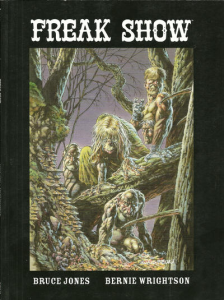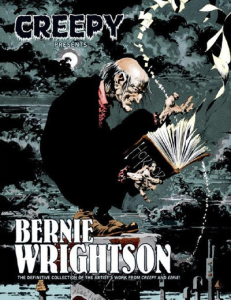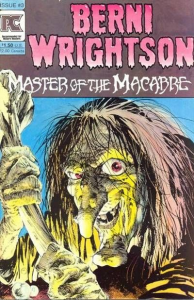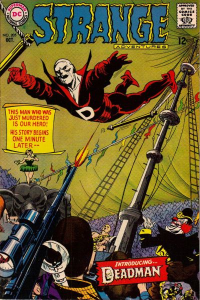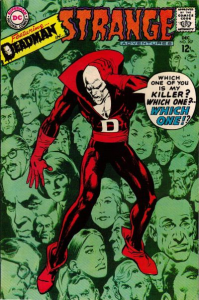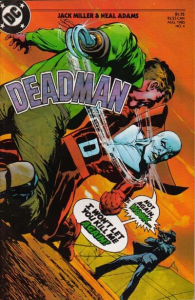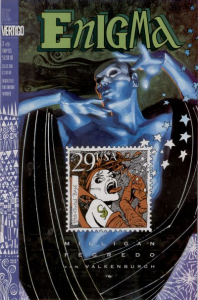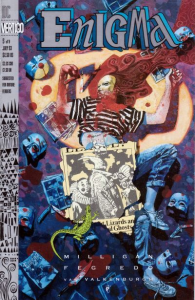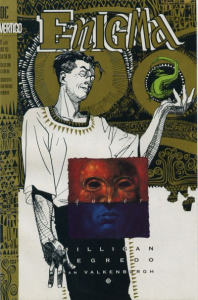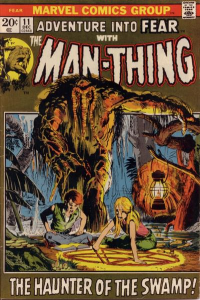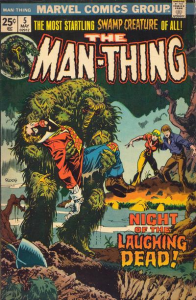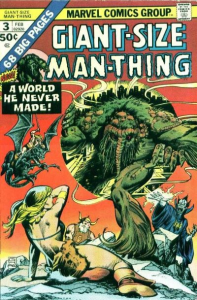If you’re into Batman comics, it’s not a far cry to assume you enjoy gothic horror. After all, that’s a built-in feature of the Dark Knight. It’s been there right from the start…
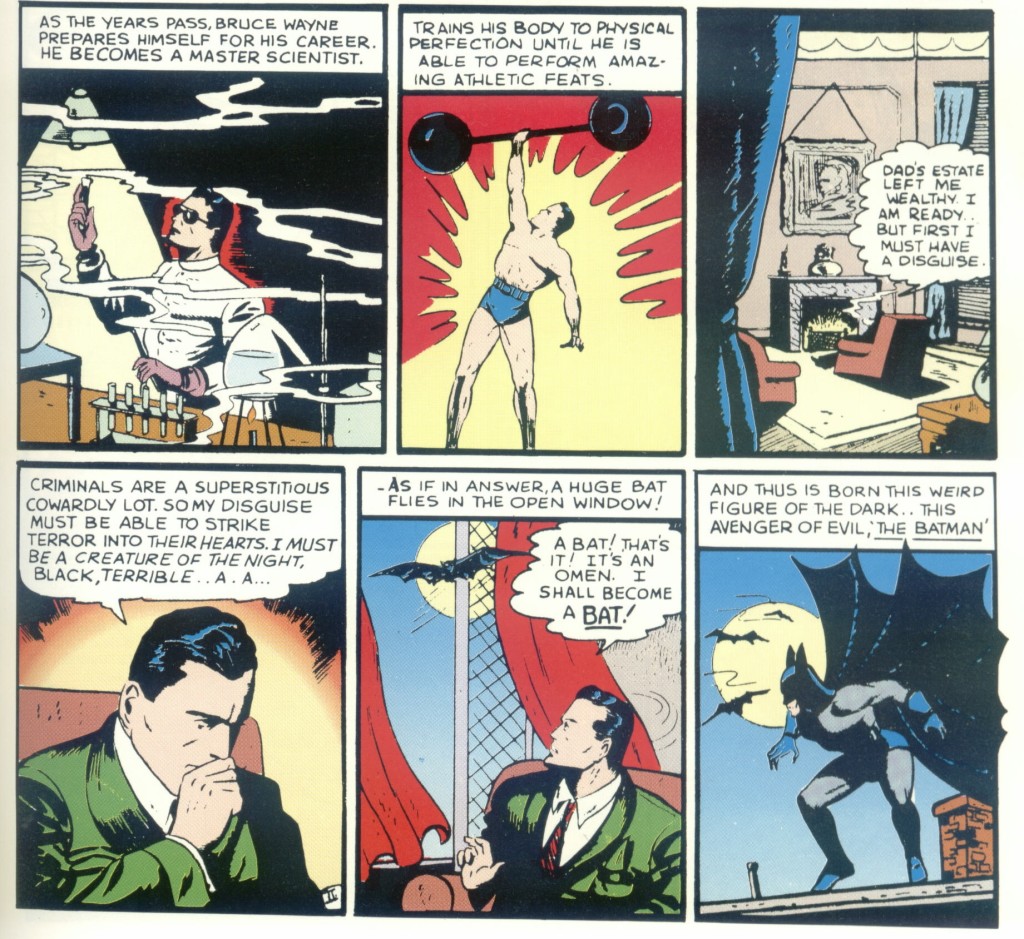 Detective Comics #33
Detective Comics #33
As Mark Fisher (citing Kim Newman) points out here, just looking at Batman’s first origin page, you can find echoes of Frankenstein (Bruce as master scientist), The Fall of the House of Usher (Wayne Manor’s melancholy, quasi-aristocratic splendor), Dracula (“Creatures of the night, what sweet music they make”), and The Cabinet of Dr Caligari (“You shall become Caligari”).
With that in mind, Batman fans may also want to check out other awesome gothic comics:
BERNIE WRIGHTSON’S SHORT STORIES
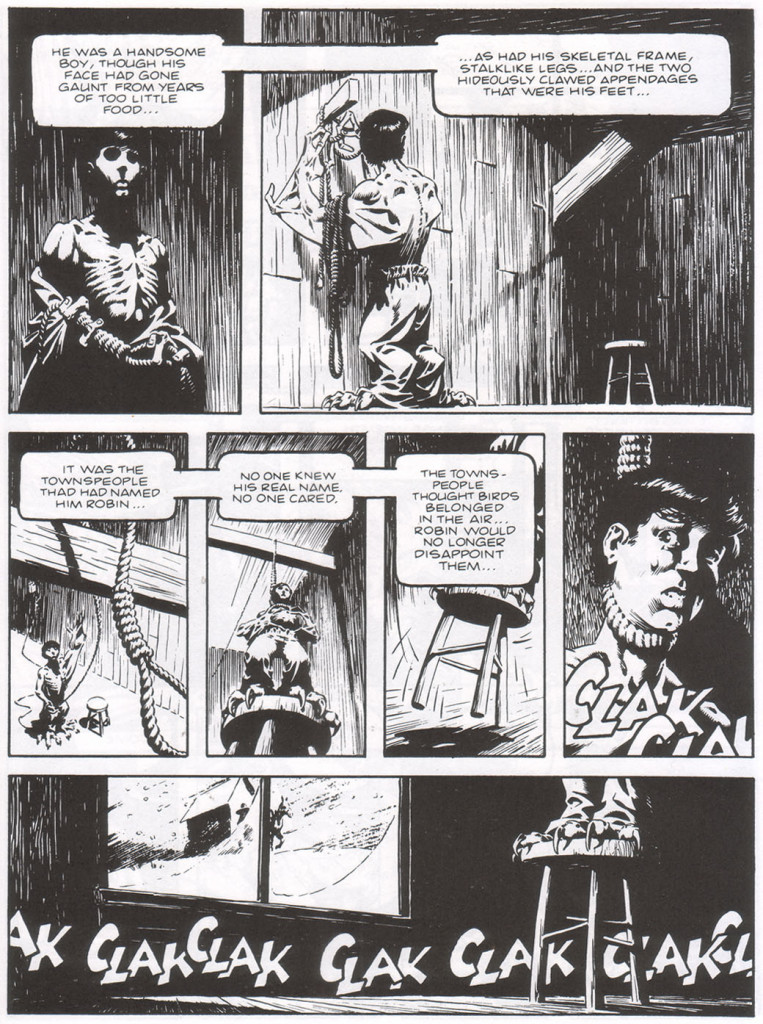 Freak Show
Freak Show
Bernie ‘Berni’ Wrightson is comics’ undisputed master of gothic art, able to bring to life both grotesque creations and lyrical beauty while imbuing each page with the eeriest of atmospheres. His drawings are the stuff The Misfits’ songs are made of.
In the mid-1970s, Wrightson illustrated several black-and-white horror stories for Warren magazines, often written by Bruce Jones. The stories aren’t exactly *scary* in the way of, say, recent movies like It Follows or Starry Eyes, but there is definitely something dreamlike and ominous about them. They’re mostly ghoulish tales with clever twist endings – some of them original, others adapting classic works from authors like Edgar Allan Poe and H.P. Lovecraft. I particularly like the über-morbid poems ‘Clarice’ and ‘A Martian Saga.’
It goes without saying that these are gorgeous comics, but there is also a lot of visual diversity here, as Bernie Wrightson experimented with different styles and techniques, making the most out of the material.
Most of this stuff has been collected in the Master of the Macabre mini-series as well as, more recently, in the Creepy Presents: Bernie Wrightson hardcover. There is also a neat graphic novel called Freak Show, which collects a handful of Wrightson stories with the same gothic mood!
DEADMAN
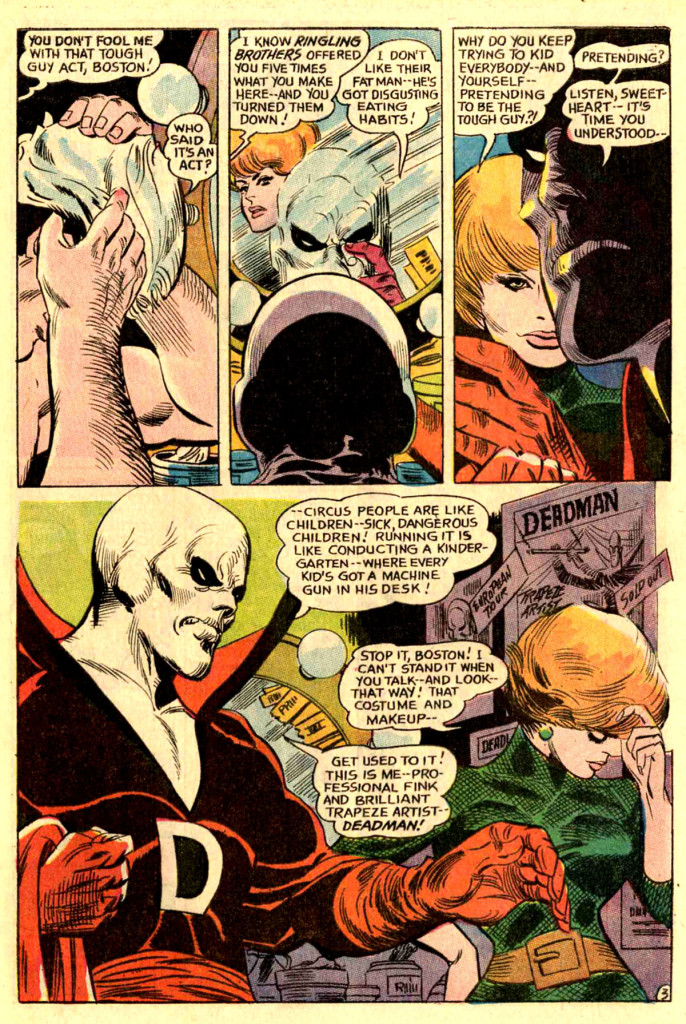 Strange Adventures #205
Strange Adventures #205
Like other tragic protagonists on this list, the acrobat Boston Brand, aka Deadman, dies on his very first issue (Strange Adventures #205, dated October 1967). After being shot by a mysterious assailant with a hook for a hand during a trapeze performance, Boston Brand’s spirit is granted (by a Hindu goddess called Rama Kushna) the power to possess any living creature, so his ghost goes on a quest to find his own killer. On the way, Deadman possesses his way into every kind of crime story, involving drug dealers, biker gangs, counterfeiters, human traffickers, and, ultimately, an international society of assassins!
Deadman became such a fan-favorite that he stuck around the DC Universe long after he found his murderer and completed his karmic mission, often guest-starring in superhero tales. His early solo adventures, though, are old-school, pulpy ghost comics, even if atypically following the perspective of the ghost instead of the haunted.
Although Deadman was originally created by Arnold Drake and Carmine Infantino (with inks by George Roussos), he is mostly associated with Neal Adams, who took over pencil duties in the second story and worked on the character for years. Adams brought the same kind of gothic sensibility he would bring to Batman comics, not to mention some seriously dynamic panel layouts and a number of breathtaking splash pages. His muscular style ensured consistency even as Deadman was pushed around across various titles and writers, including a handful of reliably trippy scripts by Neal Adams himself!
Yet Adams’ stories aren’t the only ones worth tracking down. Len Wein and José Luis García-López finished a brief run on Adventure Comics with a moving, gritty little tale called ‘Never Say Die!’ Bob Haney and Jim Aparo worked their usual magic in The Brave and the Bold by delivering cool team-ups between Deadman and the Dark Knight (especially ‘Second Chance for a Deadman?’ and ‘Another Kind of Justice!’). In the late eighties, Mike Baron and Dan Jurgens did an oddball series in Action Comics Weekly that started with a CIA agent getting possessed by a Mayan god in the middle of an Iran-Contra operation and it evolved into this sidesplitting sequence where Satan takes over Mikhail Gorbachev and Deadman counter-attacks by taking over Ronald Reagan… and it only gets wilder from there.
ENIGMA
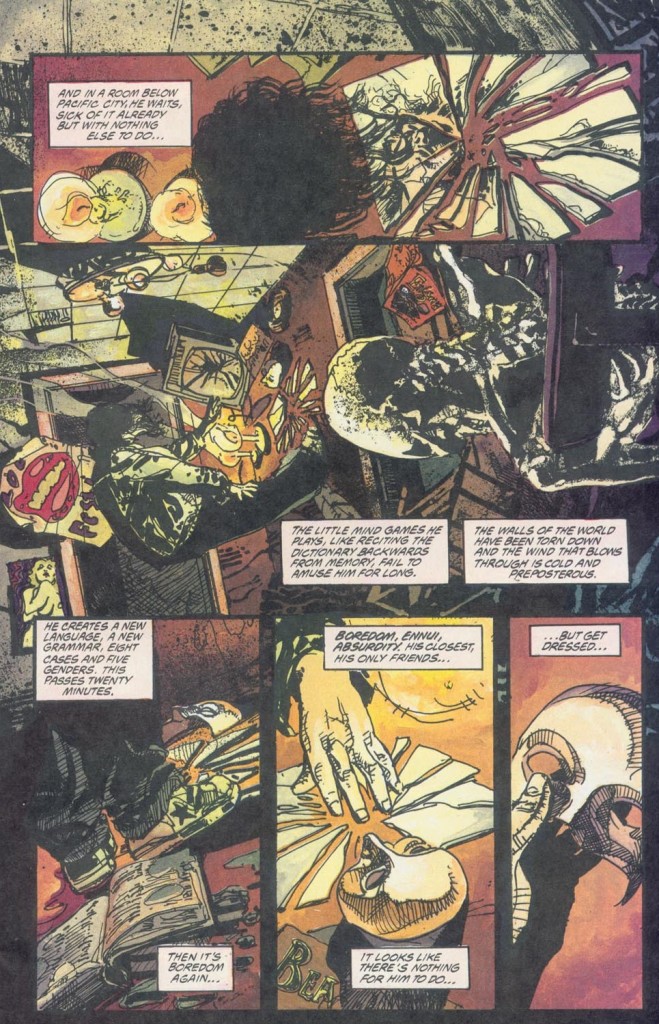 Enigma #1
Enigma #1
And then there is Enigma, a weird, fascinating mini-series that reaches a whole other level. The plot concerns an uptight man who feels responsible for the fact that strange comic book characters are coming to life and wrecking violent chaos upon the world, with some viciously disturbing results. Yet the truth is even more astounding than he imagines…
In fact, the whole thing turns out to be an existentialist trip in which writer Peter Milligan explores his usual obsession with identity and sexuality while artist Duncan Fegredo and colorist Sherilyn van Valkenburgh do their best to unsettle the hell out of readers. It’s also a postmodern masterpiece, what with its amusingly cynical narrator whose screwed up identity doesn’t become clear until the very end.
I think Peter Milligan doesn’t get enough credit for his skills at writing horror, both of a surreal kind (Shade, the Changing Man) and in more conventional narratives (Sub-Mariner: The Depths). Even his Batman stuff is full of creepy moments. Moreover, the team of Milligan, Fegredo, and van Valkenburgh also produced one of the best psychological horror tales of ‘90s, the brilliant one-shot Face.
THE MAN-THING
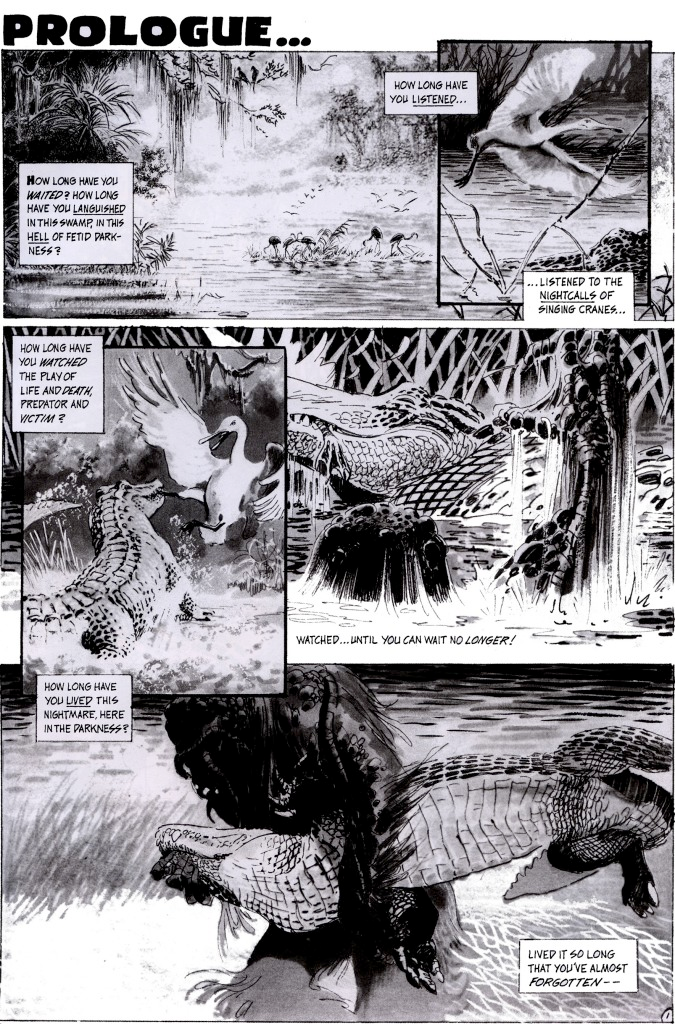
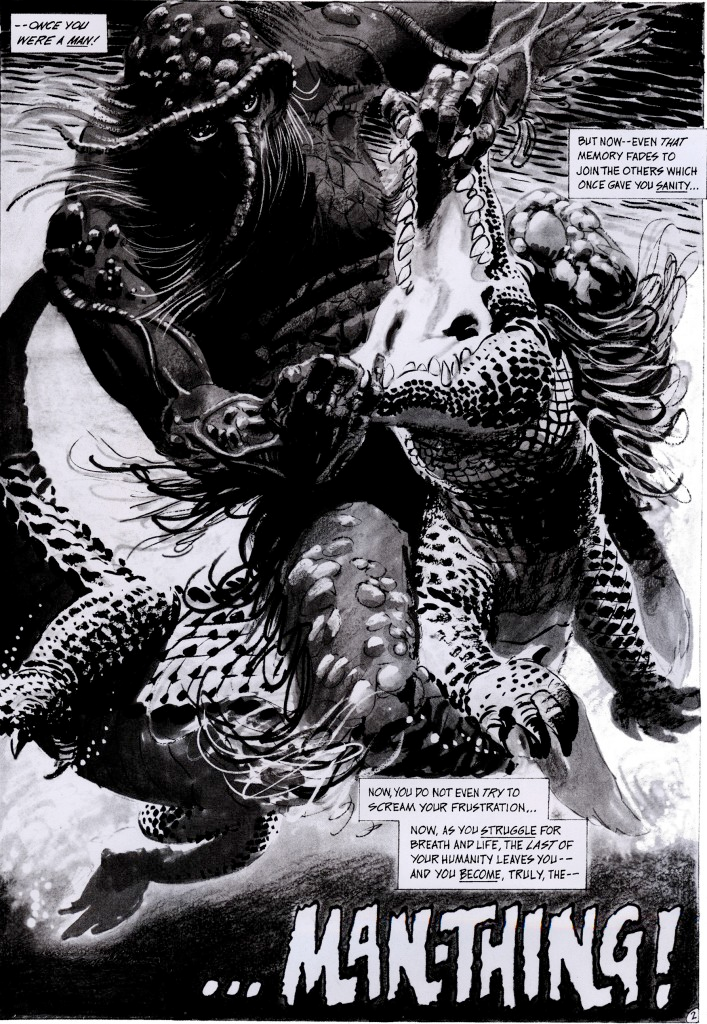 Savage Tales #1
Savage Tales #1
When biochemist Ted Sallis gets killed in a swamp, some pseudo-scientific mumbo-jumbo turns him into a mindless muck creature (aka Man-Thing) with a faint recollection of his humanity and the ability to burn those who fear him with his monstrous bare hands… As if this wasn’t enough of a bummer, the swamp happens to be located in an interdimensional nexus, ushering in various bizarre cosmic threats!
Despite having debuted first, Marvel’s Man-Thing seemed destined to become a lame version of DC’s Swamp Thing, with less impressive art and an even less inspired name (if prone to double entendres, culminating in the hilariously titled Giant-Size Man-Thing). The earlier comics, written by Gerry Conway and Roy Thomas, and even the first handful of stories written by Steve Gerber, were an OK mix of horror and adventure, with the odd twist that there was nothing heroic about the protagonist, who barely understood what was going on around him. However, Gerber soon started coming up with crazier and crazier ideas, like a fucked up version of Superman who thinks Man-Thing is his mother, or a peanut butter jar that transforms into a sword-wielding prince warrior (in the same issue that introduces Howard the Duck).
Steve Gerber’s run has become a cult classic, including the politically charged ‘A Question of Survival!,’ the psychedelic extravaganza ‘Battle for the Palace of the Gods!,’ the spooky ‘And When I Died…!,’ and the post-flower power psychological drama ‘A Candle for Sainte-Cloud.’ There is an early ‘70s underground vibe to these comics, not just because it feels like everyone involved was on drugs, but because of the angry social commentary on issues like racism, environmental destruction, and the ever-looming Vietnam War. One of the recurring villains is actually a construction company called F.A. Schist!
Steve Gerber was one of the most interesting and original voices in the world of comics. His work on Man-Thing was full of experimentalism, from the stream-of-consciousness prose piece in ‘Song-Cry…of the Living Dead Man!’ to the metafictional final issue in which Gerber himself showed up to claim one of the characters had been dictating the stories he’d written (this was fifteen years before Grant Morrision famously wrote himself into Animal Man #26). I also really dig Gerber’s satirical tinge, particularly in the delirious saga of the old longshoreman who goes around dressed like a Viking trying to obliterate people he thinks have undermined the concept of masculinity.
Gerber went on to expand many of Man-Thing’s characters and concepts in other heady, offbeat comics he did for Marvel, such as Omega the Unknown, The Defenders, and Foolkiller, not to mention his quirky comedy runs on Howard the Duck and The Sensational She-Hulk.
NEXT: More gothic comics.

